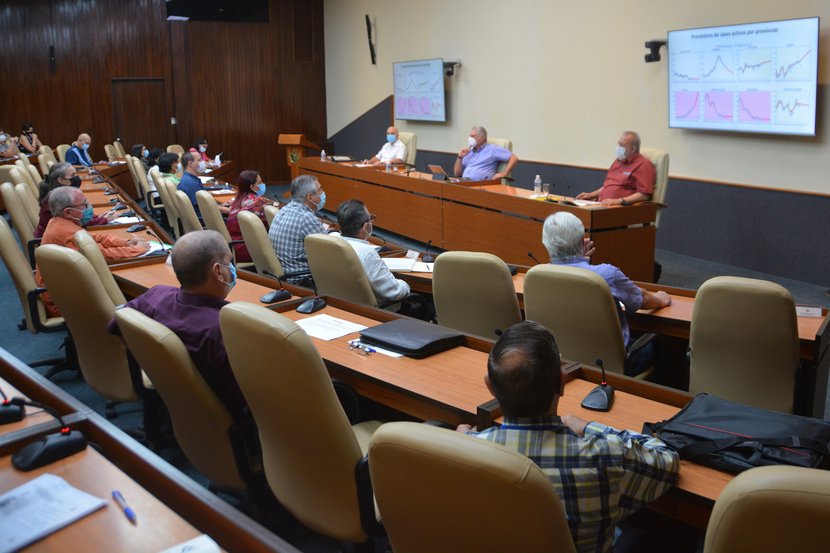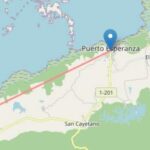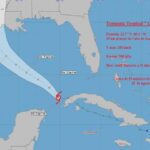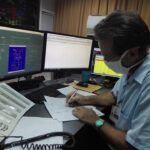Cuba: When COVID-19 arrived in Cuba a year ago, alarms went off before terrifying images that showed intensive therapies from the first world collapsed due to the number of infected, Radio Reloj publishes.
News arrived of a shortage of devices to diagnose the disease and of places where it was chosen to ventilate a young person because the elderly had little chance of survival and there were not enough lung ventilators.
Faced with this bleak outlook and the increasingly suffocating economic siege of the United States, the largest of the Antilles had no alternative but to go, once again, to the ingenuity of its people to be damaged as little as possible.
It was then that we bet on technological sovereignty with all the means, and twelve months later the country had five vaccine candidates against SARS-CoV-2 and several equipment and medical devices to face its virulence.
Precisely about dreaming and doing things, having the greatest possible sovereignty, making alliances between scientific institutions and universities, spoke on Tuesday the President of the Republic, Miguel Díaz-Canel Bermúdez, in the weekly meeting with scientists and experts who advise the Government in confronting the epidemic.
On this occasion, an update of the medical equipment and devices developed by the national industry to combat COVID-19 was presented at the Palace of the Revolution.
From the taking of the sample, to the result of the PCR, said Vice Prime Minister Roberto Morales Ojeda, the intention has been that we have sovereignty, independence, that this makes us much more efficient, and that in the future they can become exportable lines of the medical, pharmaceutical, biotechnological industry, and the entire Cuban industry.
When making an description of what was done during this difficult year to achieve diagnosis by molecular techniques, the doctor of science José Luis Fernández Yero referred to the production of Cuban pads, which in February reached 339,000 units per month; and the start-up at the Cuban Neuroscience Center (CNEURO) of a new line for the automatic manufacture of these chopsticks, which from the first days of March began to produce trial batches, with a capacity of more than 120,000 pads per day.
The National Center for Bio-preparations was also able to develop the first means of transport for viruses obtained in the country, for the collection and transfer of samples from patients for the diagnosis of SARS-CoV-2.
Since April 2020, Fernández Yero pointed out, more than a million and a half of this product has been delivered, which allows adequate preservation of the tests.
Along this path of sovereignty, scientists from the Center for Advanced Studies developed a diagnostic tool for the magnetic extraction of RNA with nanotechnology, which in simpler words is a laboratory reagent kit that allows the extraction of genetic material, which is a step essential in the process of determining PCR tests.
The researcher presented at the meeting – also headed by Prime Minister Manuel Marrero Cruz ? an equipment that is being built in the country for the extraction and purification of 96 PCR samples at the same time, which would allow more speed and effectiveness in the laboratories. It works on its mechanical and electronic design, in the programming and manufacture of its electronic cards. By this month, he said, the prototype should be ready.
Likewise, it became known about the invasive emergency ventilator PCUVENTE, of which 40 have been delivered in ten hospitals in Havana; VENTIPAP, a non-invasive ventilator that should be tested in patients next month; and a prototype electrical impedance thoracic tomography, which allows to continuously visualize the lung function at the bedside of the patient. All of them developed by CNEURO.
The developments of COMBIOMED, ??an important digital medical technology company, whose products are today in all intensive care units that treat patients with COVID-19 were also presented to the country’s leadership.
The director of that entity, Arlem Fernández Sigler, referred to monitors, pulse oximeters, infusion pumps, stop cars and defibrillators produced by that industry, which are part of the life support of many Cuban hospitals.
They have also joined the clinical trials of vaccine candidates with their digital sphygmomanometers. Fernández Sigler spoke in detail about the development of a high-performance lung ventilator for intensive care for adults, which should have its prototype ready between March and April. Of other short-term challenges, he discussed the development of a high-performance ventilator for pediatric patients and a Cuban-designed anesthesia machine.
Based on all this, said the manager, we would practically guarantee the medical equipment that an intensive care room needs, going through the monitor, oximeters, pumps, ventilators and anesthesia machines. It’s amazing what all this costs outside the country, he said.
CURVES THAT DO NOT GO DOWN, MEASURES NEEDED
The doctor of science Raúl Guinovart Díaz, dean of the Faculty of Mathematics and Computing at the University of Havana, once again brought to the Palace of the Revolution the curves of the possible course of the COVID-19 epidemic in Cuba, which ?are not favorable, they have a high incidence, and we need new measures to break those forecasts?, the President of the Republic, Miguel Díaz-Canel Bermúdez, evaluated.
The president indicated to analyze other measures that may impact on the incidence of positive cases and deaths, because with what we do now, he specified, we are staying on a plateau that continues to forecast more than 700 daily cases and three to four deaths per day.
Precisely when analyzing the behavior of the last day at the meeting of the temporary work group of the Government, the Minister of Public Health, José Angel Portal Miranda, reported that 792 new cases had been diagnosed, after processing 19,812 PCR samples. Those confirmed on Tuesday represent an increase of 8% over the previous day. On the other hand, medical discharges reached the figure of 1,060.
Through videoconference with all the provinces of the country and the participation of the second secretary of the Central Committee of the Party, José Ramón Machado Ventura, and the president of the National Assembly of People’s Power, Esteban Lazo Hernández, it was known that the territories with the most dispersion of the disease are Havana (in its 15 municipalities), Sancti Spíritus (in seven out of eight) and Pinar del Río (in nine out of 11).
Three deaths were reported, the same number as the previous day, in Havana, Granma and Santiago de Cuba, with which the fatality in the nation due to COVID-19 is set at 0.60%.
Mathematical models, reiterated Prime Minister Manuel Marrero Cruz, do not bode well. Experience has told us that in trust lays the danger, there are the examples of Granma and Sancti Spíritus, who were at the forefront of disease control and today are among the worst.
Obviously, he concluded, we have to change the methods and measures to see how we seek greater effectiveness.





